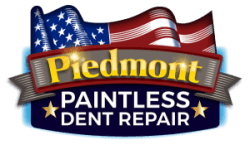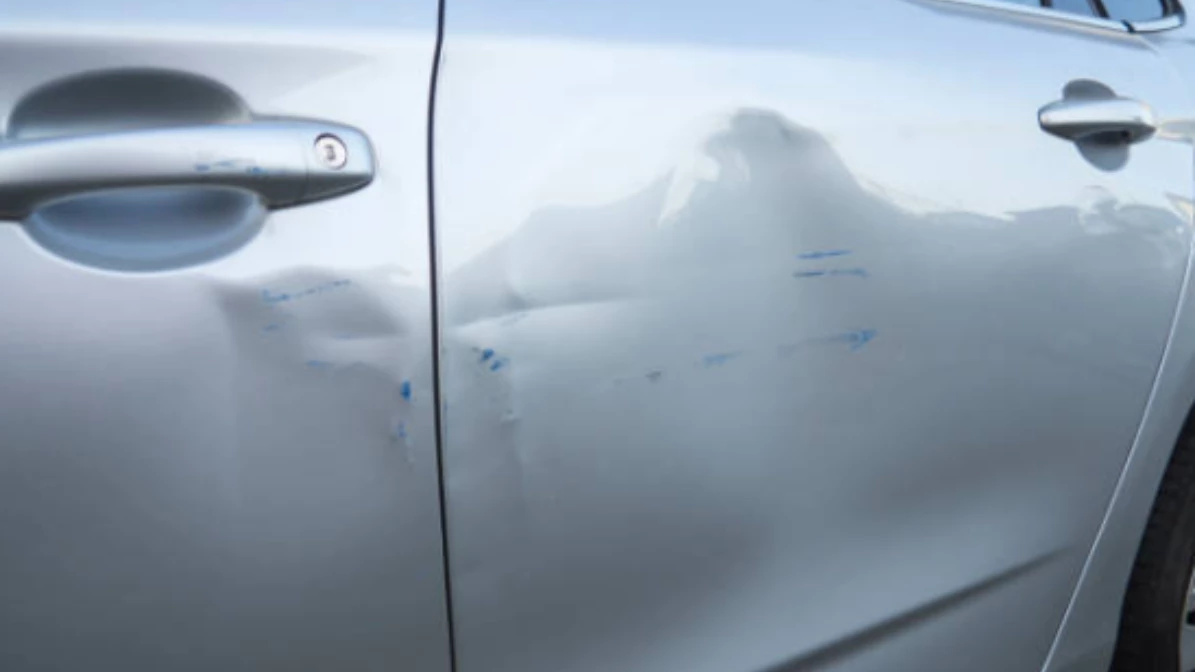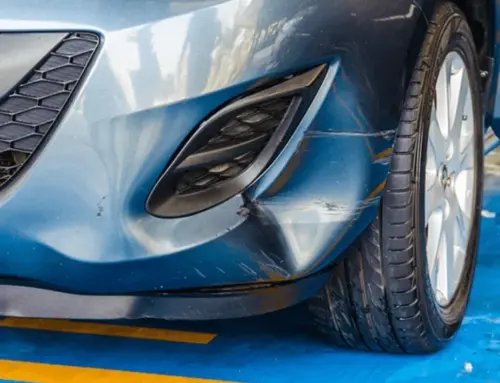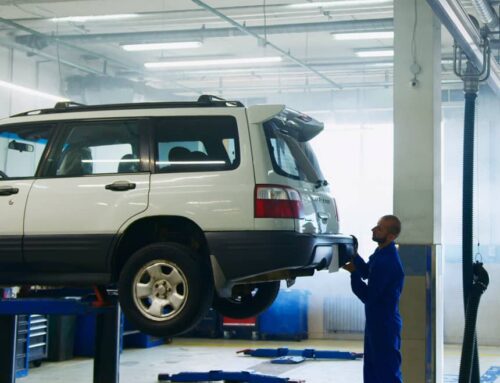When it comes to maintaining the sleek appearance of your vehicle, paintless dent repair (PDR) offers an efficient and cost-effective solution. But understanding the cost of PDR can sometimes be confusing due to various influencing factors. In this guide, we’ll break down the key elements that determine the price of paintless dent repair, helping you to make an informed decision.
From the size and location of the dent to the type of vehicle and extent of the damage, several factors play a role in the final cost. Our goal is to provide you with clear, straightforward information so you know exactly what to expect when considering PDR for your car.
How does the dent’s size affect the paintless dent repair cost?
The size of the dent plays a crucial role in determining the cost of paintless dent repair (PDR). Generally, the larger the dent, the more time and effort required to repair it properly, increasing the price. Here’s a breakdown of how dent size typically affects PDR cost:
- Minor Dents: These are usually the easiest and cheapest to repair. Minor dents, such as those caused by hail or door dings, often require less complex techniques and can be fixed quickly. The cost of repairing minor dents can be relatively low, making PDR a very cost-effective option.
- Medium Dents: As dents increase in size, they become more difficult to repair. Medium-sized dents may require more sophisticated techniques and more time to properly massage the metal back into place without damaging the paint. This intermediate level of repair generally costs more than minor dents but remains less expensive than large dent repairs.
- Large Dents: These are the most challenging and consequently the most expensive to repair using PDR. Large dents can affect the metal’s structural integrity and are more likely to stretch the metal and the paint. Specialized tools and techniques are required to fix large dents, and there’s a higher risk of not being able to fully restore the panel to its original condition without some imperfections.
- Complexity and Access: The location of the dent on the vehicle and how easy it is to access the backside of the dent also play a significant role. Dents that are closer to the edge of a panel or in areas with limited access (such as near reinforcements) require more time and skill to repair, thus increasing the cost.
Overall, while the size of the dent is a major determinant of repair costs, other factors like the dent’s location, the number of dents, and the specific vehicle characteristics also significantly influence the overall expense.
Are there any dents that cannot be repaired with paintless dent repair?
Yes, certain types of dents cannot be effectively repaired using paintless dent repair (PDR) due to the nature and extent of the damage. Here are some conditions where PDR may not be suitable:
- Paint Damage: PDR is not advisable if the dent is accompanied by cracked or chipped paint. The technique involves manipulating the metal from behind; if the paint is not intact, the process could cause further peeling or cracking.
- Sharp Dents: Dents with sharp edges that result in a crease in the metal are typically more difficult to repair with PDR. These types of dents can affect the structural integrity of the metal, making it hard to restore without some form of filling and painting.
- Stretched Metal: When metal has been stretched too far out of shape, such as in large or particularly deep dents, PDR may be unable to restore it to its original form completely. This is because the metal’s elasticity has been compromised.
- Location of the Dent: Dents located near the edges of panels or in areas with complex curves are often challenging for PDR techniques. These areas are generally less accessible and require more complex repairs that PDR might not be able to handle.
- Previous Body Work: Vehicles that have undergone previous auto body work and have areas with body filler for repainted surfaces may need to be more suitable for PDR. The filler or the repainted surfaces might not withstand the manipulation required in PDR.
Traditional dent repair methods involving filling, sanding, and repainting may be necessary in cases where PDR isn’t suitable. It’s always best to consult with a professional who can assess the damage and determine the most appropriate method of repair.
Does the location of the dent on the car influence the repair cost?
Yes, the location of the dent on a car significantly influences the cost of repair, especially in paintless dent repair (PDR). Here’s how the location affects the repair process and costs:
- Accessibility: Dents in easily accessible areas, such as the middle of a door or the flat surface of a hood, are typically easier and cheaper to repair. Technicians can easily access the panel’s backside to manipulate the dent without requiring additional tools or complex procedures.
- Complex Areas: Dents located on or near the edges of the panels, around the grille, close to headlights, or on curved surfaces like fenders and the trunk, are more difficult to access and repair. These areas often require special tools and techniques, increasing labor time and cost. The metal near the edges of panels is also generally more rigid, complicating the PDR process.
- Panel Material: The material of the panel where the dent is located also plays a crucial role. For example, dents on aluminum panels (commonly found on hoods and sometimes doors) are more complex to repair than those on steel panels. Aluminum has a different memory and flexibility than steel, requiring more skill and time to manipulate, thereby increasing the repair cost.
- Obstructions: Some dents may be located where internal components or reinforcements obstruct access to the panel’s backside. In such cases, additional labor might be needed to remove parts of the car to reach the dent, adding to the overall cost.
Because of these factors, the location of the dent can substantially affect the feasibility and cost of the repair. When evaluating the cost and method for repairing a dent, these considerations will often dictate whether PDR is possible or if alternative repair methods need to be employed.
Will my car insurance cover the cost of paintless dent repair?
Whether your car insurance covers the cost of paintless dent repair (PDR) depends on the type of coverage you have and the circumstances under which your car was dented. Here are a few scenarios and coverage types to consider:
- Comprehensive Coverage: This type of insurance typically covers damage to your car that results from non-collision-related incidents, such as hail damage, falling objects, vandalism, or certain natural disasters. If the dent in your vehicle was caused by one of these events, comprehensive coverage will likely cover the PDR cost.
- Collision Coverage: If the dent resulted from a collision with another vehicle or an object like a fence or pole, collision coverage would apply. This part of your policy covers damage from car accidents regardless of who is at fault.
- Liability Coverage does not cover repairs to your vehicle; it only covers damage you might cause to other cars or property and injuries to other people in an accident where you are at fault.
- Deductible Considerations: You must consider your deductible, the amount you pay out of pocket, before your insurance coverage kicks in. If the repair cost for minor repairs such as PDR is less than or close to your deductible, it might not be worth filing a claim.
- Insurance Premiums: Remember that claiming insurance for minor repairs might affect your future premiums. It’s wise to evaluate whether the cost of PDR without insurance is more economical in the long term than the potential rise in insurance costs.
You should contact your insurance provider directly to determine if PDR is covered under your specific policy. They can provide details on what your policy covers and advise whether filing a claim for paintless dent repair is beneficial in your situation.
Unlock Savings: Understand PDR Cost Factors!
At Piedmont Dent Repair, we are dedicated to helping you understand the factors that influence the cost of Paintless Dent Repair (PDR) so you can make informed decisions and save money.
Our expert technicians specialize in PDR, a method that not only preserves your vehicle’s original finish but also offers a more affordable alternative to traditional body shop repairs. We assess each dent individually, considering size, location, and complexity to provide transparent pricing—trust Piedmont Dent Repair for efficient and effective solutions tailored to your needs.
Visit us to discover how our PDR services can restore your vehicle’s appearance without breaking the bank.





